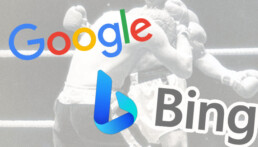Google Ads vs Bing Ads: A Detailed Comparison of Pricing Factors
7 Key Factors in Google Ads vs Bing Ads Pricing
The key factors impacting Google Ads and Bing Ads pricing include market share and audience demographics, search volume, cost-per-click, ad placement, click-through rates, keyword competition, and geographic targeting. Google’s larger market share and user base means higher search volume and competition, affecting cost. Bing’s older, higher-income user base can also influence prices. Differences in cost-per-click and ad placement costs between platforms are due to these variables. Click-through rates, competitive keywords, and targeted geography also considerably shape costs. Digging deeper into these dynamics reveals more nuanced strategies to optimize your ad spend on both platforms.
Understanding Google Ads Pricing
To truly harness the power of Google Ads, you need to deeply explore its pricing structure, understanding how each factor contributes to the overall cost. Two key elements to ponder are AdWords budgeting and Quality Score impact.
Your AdWords budgeting strategy can greatly influence your campaign’s success. You’re not just setting a limit on your spending; you’re also determining how often your ads will appear. Google’s algorithms factor in your budget when deciding which ads to display and how often. If you’re not careful, you could end up spending more than you intended.
The Quality Score is another vital element that affects your Google Ads cost. It’s a metric that Google uses to measure the quality and relevance of your keywords and PPC ads. It influences your cost per click (CPC) and your ad rank in the ad auction process. A higher Quality Score means lower costs and better ad positions.
In essence, strategic AdWords budgeting and understanding Quality Score impact will help you get the most out of your investment in Google Ads. It’s not just about spending money; it’s about making every dollar count.
Breakdown of Bing Ads Cost
Just like with Google, managing your Bing Ads cost effectively hinges on understanding its unique pricing structure and how each component impacts your overall expenditure. You’ve got to grasp all that’s involved, from Bing Ads demographics to the ad schedule impact.
The Bing Ads demographics play a critical role in determining the cost. The targeting capabilities allow you to reach specific groups based on factors like age, gender, location, and even the devices they use. Since Bing users tend to be older and have a higher income, you might find that the cost per click (CPC) is slightly higher, but the return on investment could also be greater.
Ad schedule impact is another key factor. If you’re running your ads round the clock, you’ll likely pay more than if you schedule them for specific times of the day or week. Bing provides flexibility, enabling you to optimize your schedule based on when your target audience is most active.

Click-Through Rate Comparison
When evaluating your ad spend, it’s vital to analyze the click-through rates (CTR) on both Google Ads and Bing Ads, as they can greatly impact your campaign’s success and cost efficiency. CTR is a key determinant of your ad’s effectiveness and directly influences your return on investment (ROI). It’s a clear indicator of whether your target audience finds your ad relevant and enticing enough to engage.
A high CTR signifies that your ad is resonating with your audience, leading to more clicks and potentially more conversions. This has a positive impact on your ROI, as you’re reaching more potential customers without increasing your ad spend. On the other hand, a low CTR may suggest that your ad isn’t as effective and might require some tweaking and optimization.
Next, let’s consider the ad quality score. Both Google and Bing use this metric, which is influenced by your CTR, to determine your ad’s position and cost per click (CPC). A high-quality score can earn you a higher ad position at a lower cost, enhancing your campaign’s cost-efficiency. Therefore, optimizing your CTR can boost your ad’s quality score, maximize your ROI, and ultimately lead to a more successful campaign.
Keyword Competition: Google Vs Bing
Exploring the landscape of keyword competition between Google and Bing is crucial in crafting a cost-effective and high-performing ad campaign. Both platforms have a unique approach to ad relevance scoring and search volume impact, and understanding these will help you optimize your advertising budget.
Google, with its larger search volume, often has higher keyword competition. This means you’ll likely pay more for popular keywords. However, Google’s ad relevance scoring can help mitigate costs. If your ad is highly relevant to the keyword, you’ll likely pay less due to improved Quality Score.
In contrast, Bing has a lower search volume, but don’t underestimate its potential. Lower competition for keywords can mean lower costs for you. While less rigorous than Google’s, Bing’s ad relevance scoring still rewards well-targeted ads.
Strategically, you might opt for Google if you’re after high-volume keywords and can guarantee high ad relevance. However, if you’re targeting less competitive keywords, Bing could offer a cost advantage.
Geographic Targeting Cost Analysis
Exploring the world of geographic targeting, it’s important to recognize that the costs can fluctuate greatly between Google Ads and Bing Ads, often influenced by the specific regions you’re targeting. Understanding the local market impact can help you optimize your ad spend.
For instance, Google Ads might be more costly in densely populated urban areas due to the high competition, whereas Bing Ads could offer a cost-effective alternative in such regions. Remember, a platform’s popularity in a region directly impacts the cost.
To break it down, let’s consider regional ad performance. It’s not always about which platform is cheaper overall, but which one gives you better results in your target region. For example, if your target market is the United States, you might find Google Ads to provide a better return on investment due to its larger user base, even if the cost per click is higher.
However, throwing all your resources at Google mightn’t be the best strategy if your target market is in a region where Bing has a stronger presence. Carefully analyzing your geographic targeting costs can reveal strategic opportunities for your advertising efforts.
Device Targeting in Ad Pricing
Shifting the spotlight from geographic to device targeting, you’ll find that the type of device your audience uses can also have a significant impact on the pricing of your ads on Google and Bing. Platform-specific strategies allow advertisers to target specific devices, such as desktop, mobile, or tablet.
Device performance metrics offer a granular insight into how your ads perform on different devices. You’ll find that some devices might yield a higher click-through rate (CTR) or conversion rate, potentially affecting your ads’ cost-per-click (CPC). For example, if your audience primarily uses mobile devices and your ads perform well on mobile, you could pay less per click.
However, it’s important to remember that each platform has its own algorithm for determining ad pricing. Google, for instance, often charges more for mobile ad placements due to higher competition. Conversely, Bing typically has lower mobile costs.
Therefore, understanding your target audience’s device usage and analyzing detailed device performance metrics are essential steps in formulating a cost-effective ad strategy on Google and Bing. By incorporating platform specific strategies, you can optimize your ad spend and achieve better results.
Ad Extensions and Their Effect on Cost
To explore the effectiveness of your ads and potentially even reduce costs, it’s crucial to consider the role of ad extensions in your Google and Bing advertising strategy. Ad extensions provide additional information about your business, such as phone numbers or extra links to specific pages on your site, enhancing your ad’s visibility and usefulness.
Let’s dive into ‘Ad Extension Types’ and their cost implications. Google and Bing offer various extensions, including call, location, review, and sitelink extensions. Each type impacts your ad’s performance and cost in different ways. For example, call extensions might increase your cost-per-click but can also greatly enhance conversion rates, offering a higher return on investment.
To optimize your strategy, monitor your ‘Extension Performance’. Analyze the data to understand which extensions are driving engagements and conversions. If an extension isn’t adding value, consider replacing it with one that might.
In evaluating Google Ads vs Bing Ads pricing, key factors like cost, click-through rate, keyword competition, geographic and device targeting, and ad extensions sway the balance to a great extent.
While Google might have higher traffic, Bing can offer a more targeted niche. Ultimately, your choice should align with your business goals.
Remember, strategic ad placement is just as vital as budgeting. Hence, consider these factors carefully to make the most out of your advertising budget.
